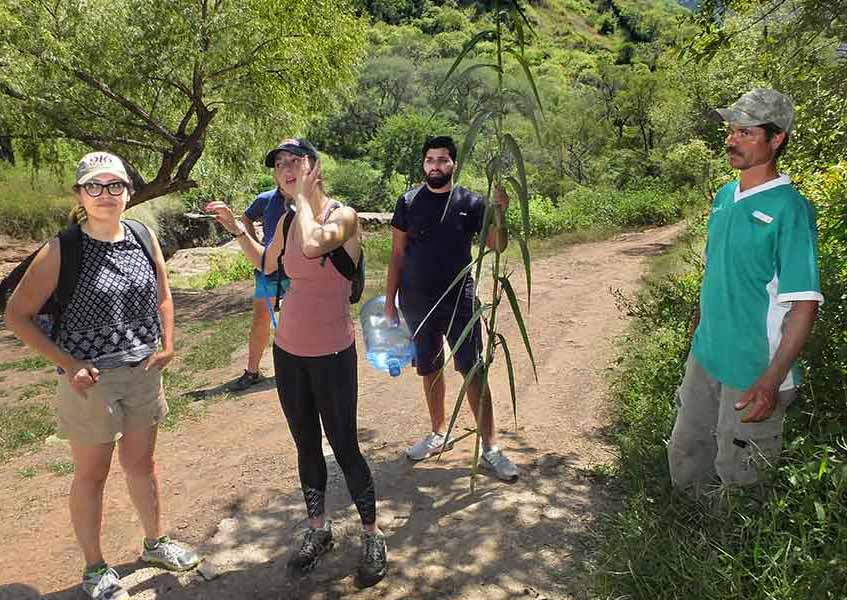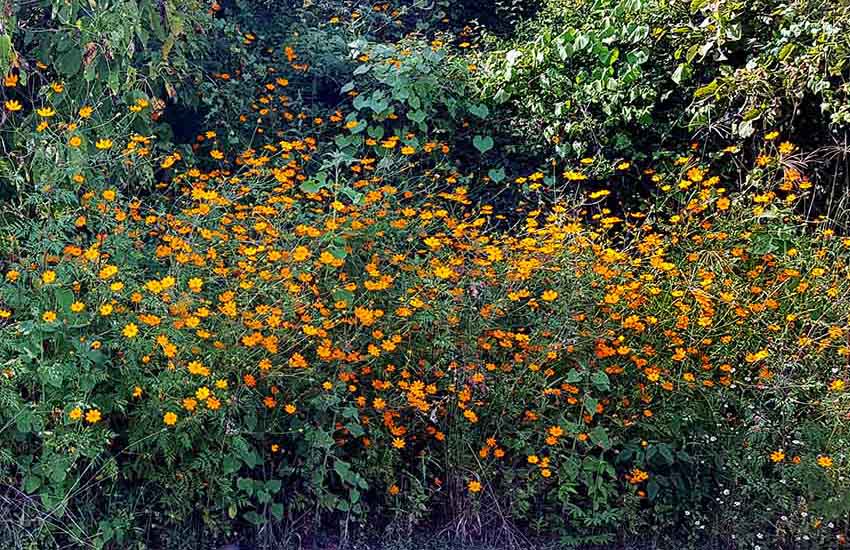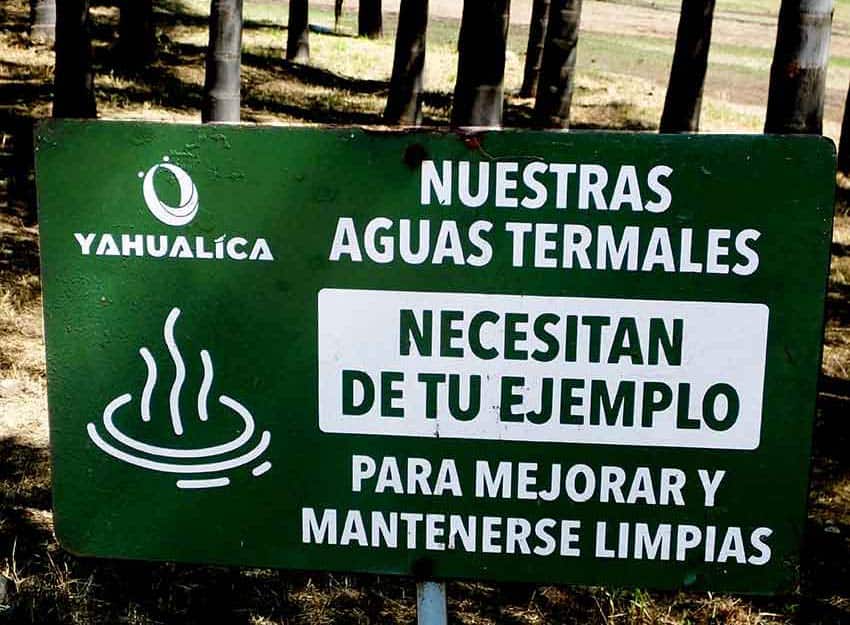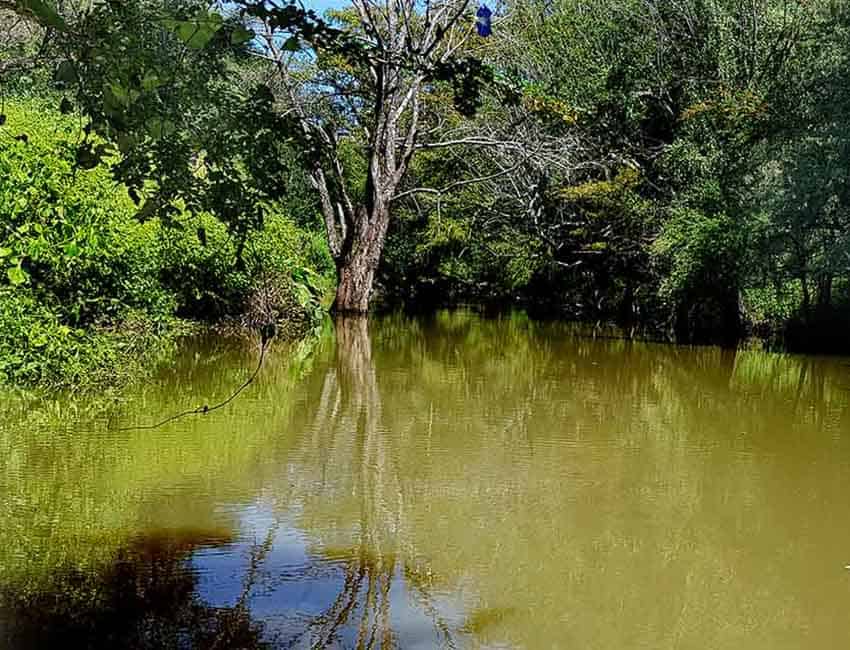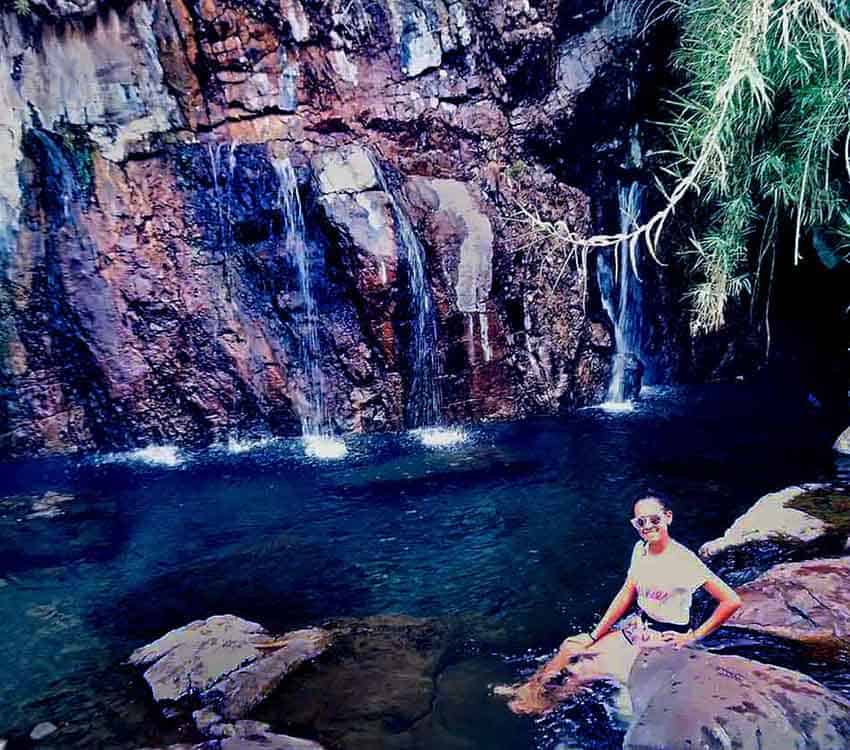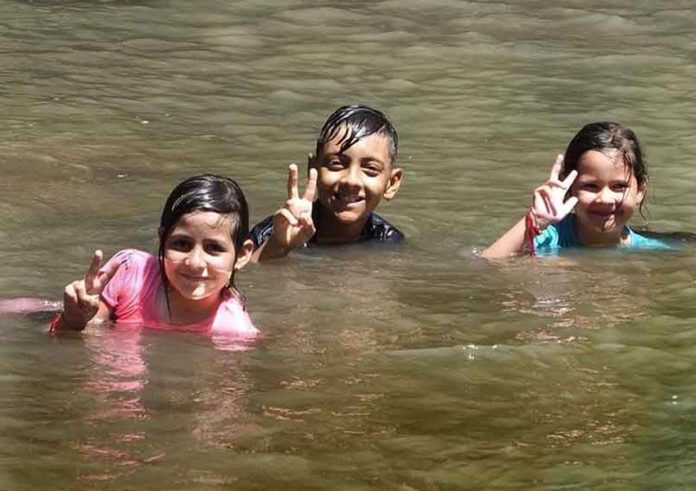The Primavera Forest’s Río Caliente (Hot River) is one of Jalisco’s most popular natural phenomena. The 16-kilometer-long river literally boils out of a canyon wall and eventually cools down to become the Río Salado (Salty River) famed for its numerous rapids, which give it a marvelous Jacuzzi effect — and it even has a few deep spots where you can almost swim.
For a long time, I believed Río Caliente was the only hot stream in the state that truly deserved to be called a “river.”
Then I ran into Roy, an electronics engineer who enjoys exploring the wilds of western Mexico, far off the beaten track.
“I know a hot river in Los Altos (the Jalisco Highlands) that can certainly give Río Caliente a run for the money,” he said. “You need to check it out.”
So off we went to find the hot river, aiming our GPS literally at one waypoint after another that Roy had supplied. After what seemed like endless hours bouncing over miserable, bumpy, rocky, dirt roads, we arrived at … a balneario!
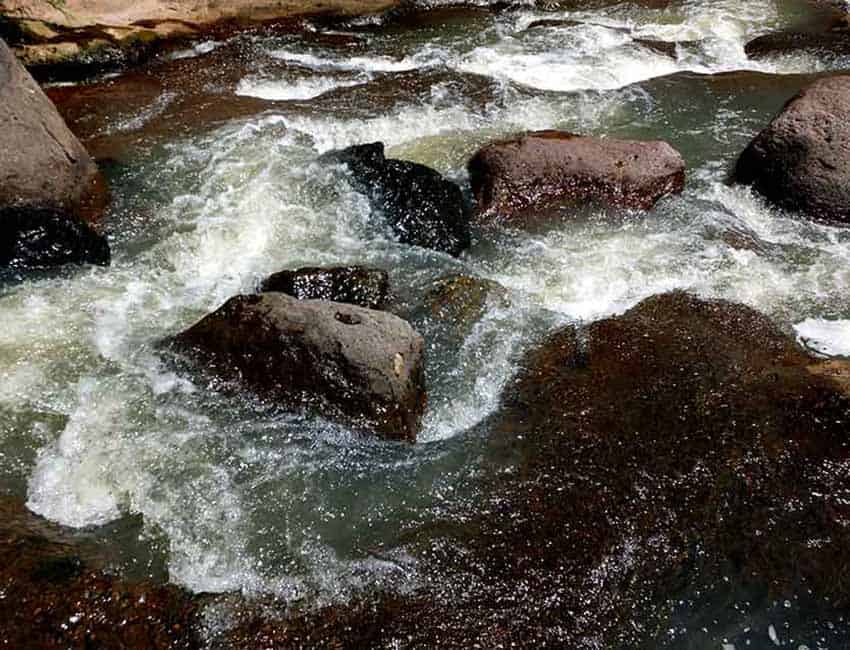
That is, a rather ordinary swimming pool filled with the usual crowd of screaming kids and surrounded with the usual battery of giant speakers blasting the usual sort of music preferred by water parks. I suppose the pool was filled with hot water, but I wasn’t really interested in finding out.
A man wearing a sombrero stepped up to us: “Thirty pesos per person, por favor.”
“We’re looking for the hot river,” we told him.
“Our fee includes access to the river you seek. Thirty pesos each, please.”
Grumbling, we paid the fee, gave the noisy pool a wide berth and eventually came to the shore of El Río Santillán.
The Santillán River, to our great joy, turned out to be quite beautiful. The water was indeed hot, and all along river’s length were stately Montezuma cypresses, which are the Mexican national tree, known as sabinos in Spanish and ahuehuetes (old men of the water) in Náhuatl.
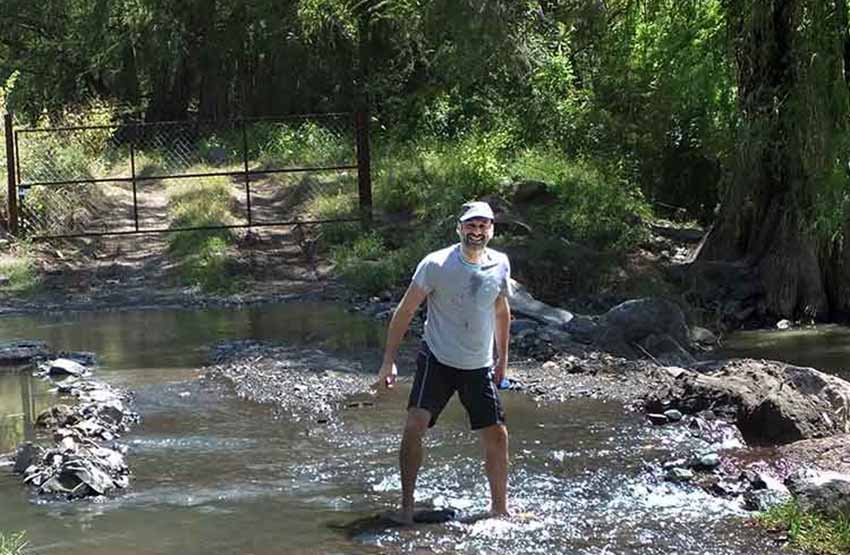
There were only two problems:
One, all this was happening during the hottest part of May, the hottest month of the year, so we had no desire to throw ourselves into a hot river. And two, garbage and trash were strewn absolutely everywhere on both banks, both upstream and downstream — kilometers of unsightly litter.
So, hot and sticky from our long, long drive, we turned around, still hot and sticky, to start the long, long drive back to Guadalajara.
This visit to the Santillán River occurred in 2012, and I never bothered to write a word about what I considered one of those adventures best forgotten.
Recently, however, I came upon an enticing video clip on YouTube showing people happily splashing in what was billed “Mexico’s deepest hot river,” the Río Santillán. In this clip, the water was crystal clear and nary a dirty diaper or discarded tequila bottle could be seen littering the shore.
This particular watery paradise on the video was called El Charco de la Vaca, or the Puddle of the Cow. Here, it was claimed, the water bubbles forth at 34 C (93 F), is perfectly drinkable and is wonderful for curing rheumatism. Best of all, there were no concrete swimming pools anywhere to be seen.
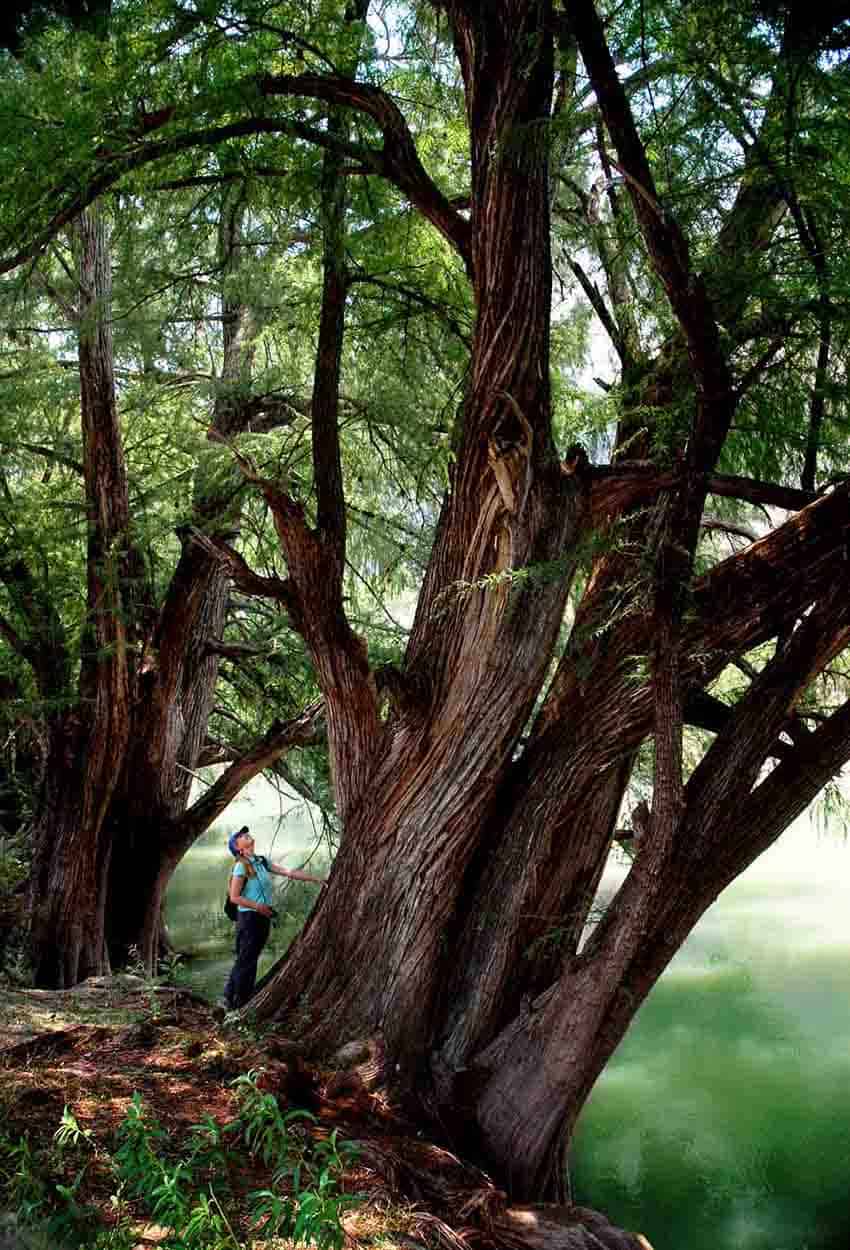
Google Maps showed two routes to El Charco de la Vaca: the awful one I had taken previously, via Tepatitlán, and a new route via Cuquío, each of them about a three-hour drive from Guadalajara.
“How would you like to take a dip in the Puddle of the Cow?” I asked my friend Josh because he had told me he wanted to take some gringo and Russian visitors on a “John Pint adventure.”
“Let’s go for it,” he replied.
Well, right off the bat, the awe-inspiring, ever-winding road through the dramatic Barranca De Oblatos, richly decorated with wildflowers, truly impressed those foreign visitors. They were already hooked.
After that, Google Maps skirted the town of Cuquío and led us onto a very nicely and recently paved road that brought us to a bridge over the Río Verde (Green River), one of Jalisco’s most picturesque and perhaps cleanest rivers.
Now, the real adventure began. Instead of crossing that bridge, we were told to take an anything-but-enticing dirt road heading off to the left, paralleling the Green River. After only 740 kilometers, we came to a smaller river, and now it seemed that the bodiless Google voice was asking us to drive right into it!
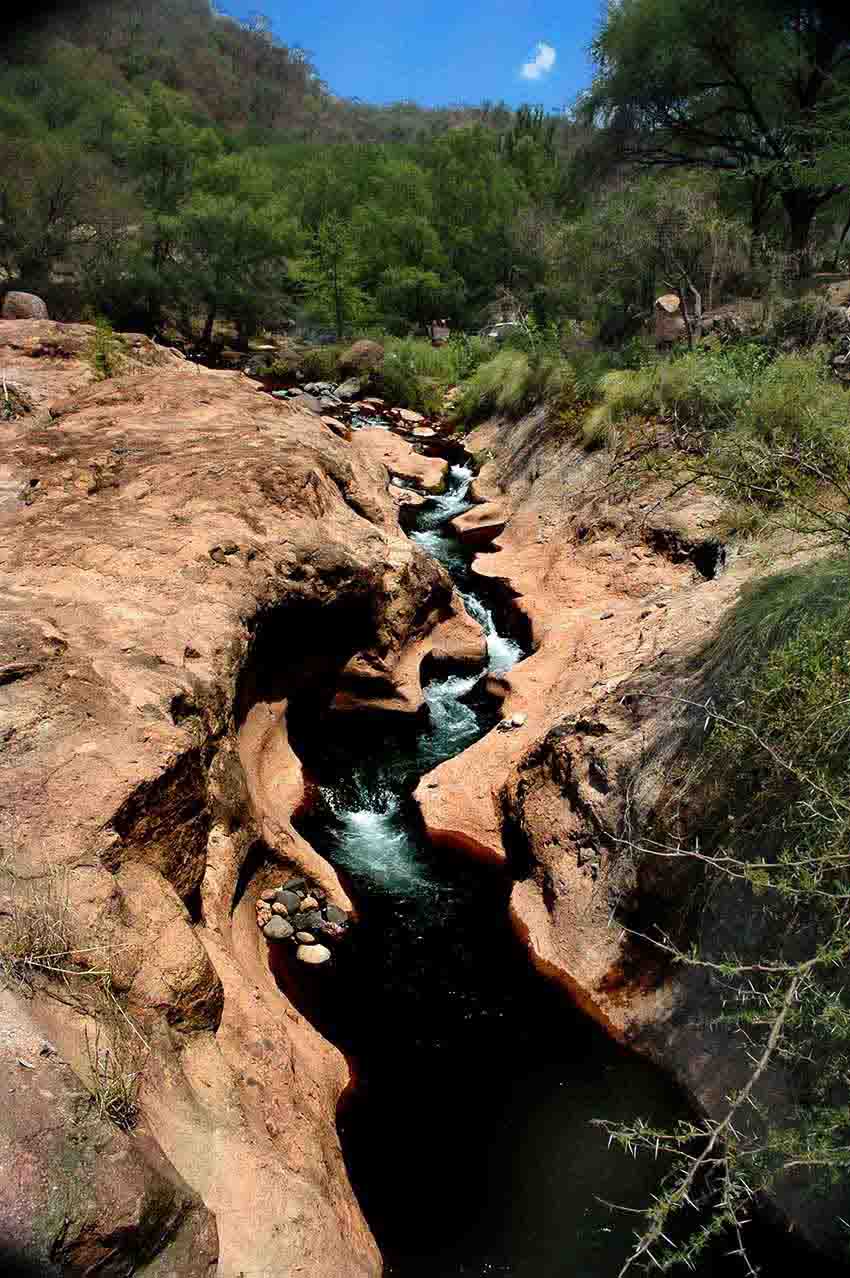
We got out of the car, immersed our hands in the water and discovered it was nice and warm. “This is our river!” we shouted. “We made it!”
Although there was no triumphal arch, no loudspeakers and no one asking for 30 pesos — no human being to be seen, in fact — there was a small, neat sign saying “Yahualica Thermal Waters: set a good example and keep them clean!”
Social media, I think, may have had a lot to do with this dramatic about-face in the locals’ attitude toward nature and littering. Bravo!
We had found the Santillán River, but instead of driving into it as Google wanted, we turned left onto a dirt road paralleling the small stream and drove a bit until we came to two cars and a handful of people happily bathing in the warm (I would not call it hot) river.
The Santillán — which empties into the Río Verde — seems to be no more than two kilometers long, its southern half accessed the way we had come, via Cuquío, and the northern half (with the noisy balneario) best reached via Tepatitlán.
Recent spurts of heavy rain had turned the river a milk-chocolate brown, but in the dry season, its waters are crystal clear. The river has a few rapids and a few picturesque narrow spots where you can get as much of a Jacuzzi effect as you could ever desire.
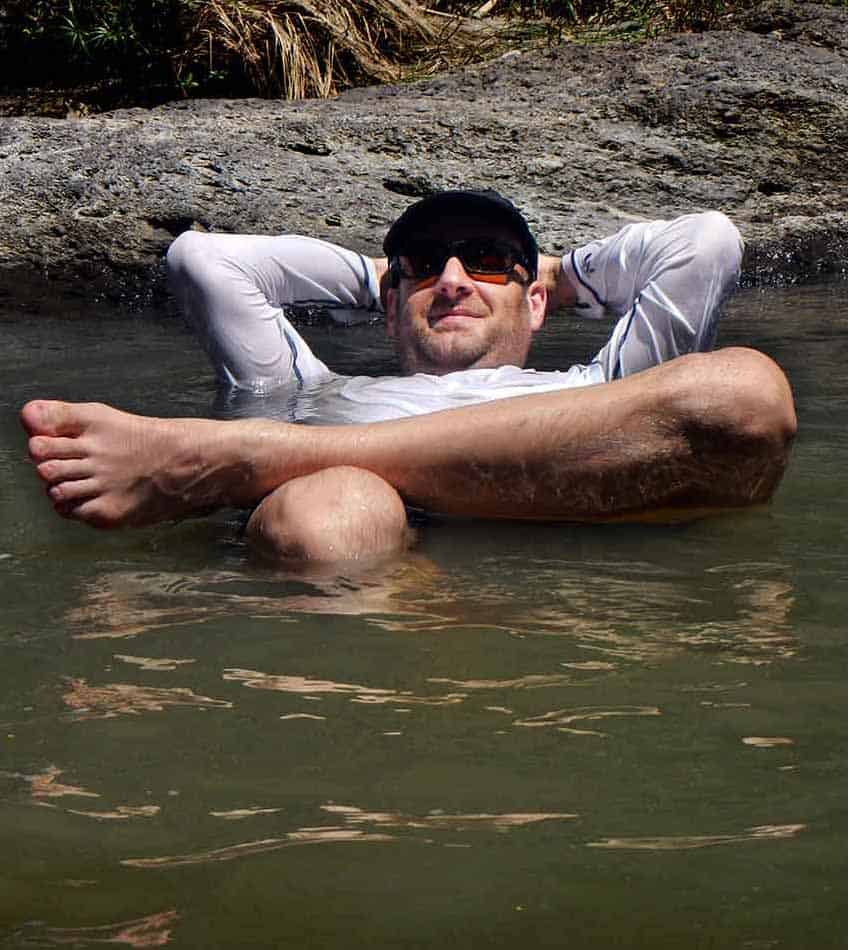
Although shade is a bit at a premium, we did find a good spot all to ourselves. Because the water temperature is “just right,” we could soak for hours to our hearts’ content.
What about the Puddle of the Cow? We found a local man who offered to guide a group of us to the spot, which sounded like a pool at the foot of a small waterfall, apparently the source of the hot river.
The guide described the hike to the Charco de la Vaca as feo (ugly), and those of our group who went with him ended up agreeing.
The Charco, by the way, turned out to be located on private land, and the owner has put up a concrete-and-barbed wire wall around it to keep people away. So much for the “all Mexicans have the right of access to all lakes and rivers in the nation” law.
As usual, I recommend that you visit this place on a weekday or Saturday when there will be few people.
If you are in Guadalajara and take the Cuquío route (OK for any sort of car), you may want to stop off at Restaurante la Magueyera. Apart from its excellent food, it offers a magnificent view of the Santiago River Canyon as well as of the picturesque Cola de Caballo Waterfall, a Guadalajara landmark.
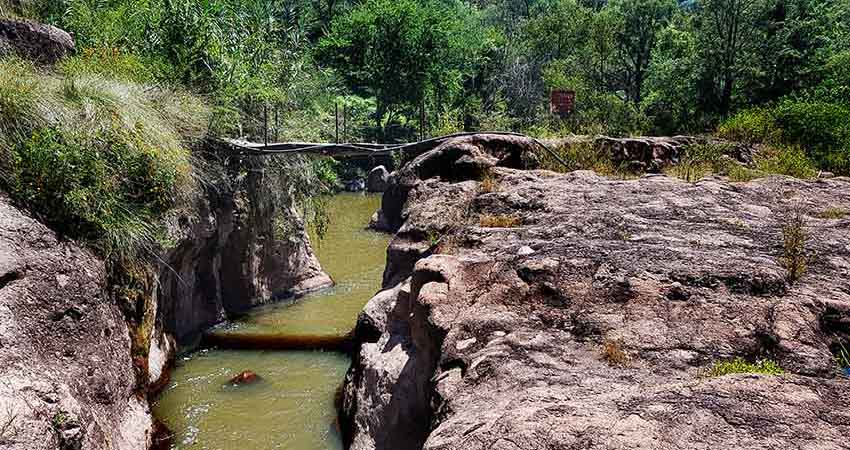
The Horse’s Tail and the Cow’s Puddle: what more could you ask from a Saturday’s outing?
The writer has lived near Guadalajara, Jalisco, for 31 years and is the author of A Guide to West Mexico’s Guachimontones and Surrounding Area and co-author of Outdoors in Western Mexico. More of his writing can be found on his website.
